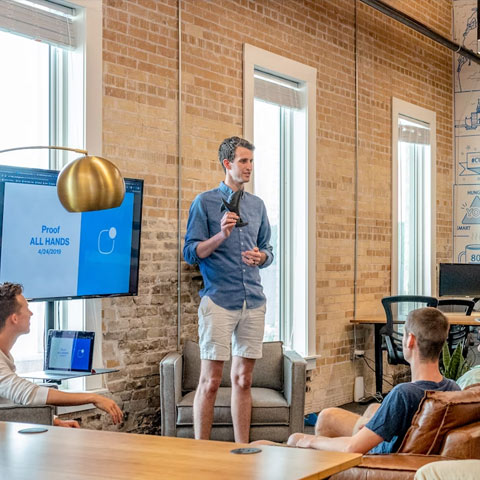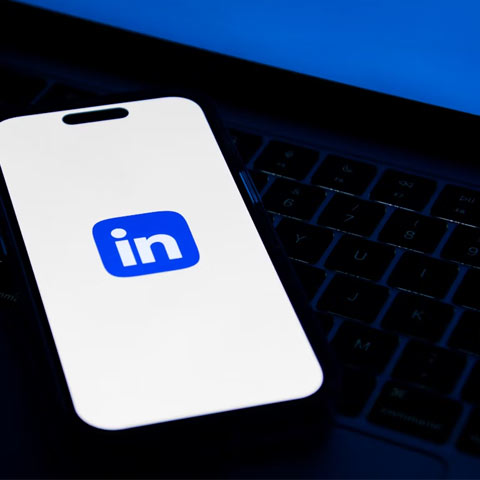How to Optimise your Landing Pages

Landing pages literally serve as the location your prospect 'lands' on your website. In addition to prospects, many repeat visitors or customers will come across your landing page. This means that your landing pages need to be optimised for every stage of the marketing funnel. This ebook will teach you how to optimise every element of your landing page in order to help you create pages that are optimized for conversions.
Get the downloadBelow is an excerpt of "How to Optimise your Landing Pages". To get your free download, and unlimited access to the whole of bizibl.com, simply log in or join free. |

|
The Page Header.
Crafting a Headline
Creating a clear, compelling headline establishes the purpose of the landing page. A visitor to your page only has a few seconds to visually interpret its purpose and value. A concise, bold headline will help to quickly establish the landing page’s authority and credibility and will prevent visitors from immediately bouncing. Oftentimes, we will title our landing pages with the name of the piece of content that we are promoting.
Think Like an SEO Wizard
The title of your landing page’s o"er, often the first thing a visitor will see, should be simple, short, and include important keywords. ! Because the headline will be the main text on the page, search engines will be inspecting it for search relevance. To help with this, the headline should also be using h1 tags.
It’s important that you think of a page name that is full of relevant keywords for your search engine strategy.
Be Actionable!
With such a short amount of time to grab the visitor’s attention, put action words in the headline that further establish the purpose of the page. For instance, we tend to precede many of our main headers with language such as “Download Now” or “Free Guide.”
Need to Say More? Use a Sub-header
Include a brief sub-header highlighting the o"er’s main benefits. Think to yourself: Why would someone want to fill out the form on your landing page? Sell the o"er’s main benefits in one short line. To follow the previous example, and appropriate sub-header would be, “Set up and strategize your Facebook marketing plan.”
Images & Video.
Use Media to Grab Attention
Creating compelling images or videos for your page can help to grab visitors’ attention and decrease the chance that they will bounce.
The Gift of GIFs
We have found that creating animated GIFs can be a creative way to increase conversion rates on our landing pages.
Don’t Forget Mobile Optimization!
Images on your landing page should always be mobile optimized. Why, you ask? 46% of Internet searchers use mobile devices exclusively as their primary research tool
Be Responsible. Be Responsive
Many people are visiting your landing pages by searching with their mobile devices. To help make images “responsive,” or able to adjust to the size of the screen, you can go into the HTML code of your image and change the width of your image to a percentage such as ‘50%’ and the height to ‘auto.’ This will then make your image resize to that ratio depending on which device a person is viewing your landing page!
Remember the ALT Text
Images can also be a helpful way to get more search engine love by changing the ALT text on your image to include keywords.
The Page Copy
Don’t Skimp on The Page Copy!
Include in the body paragraphs the main benefits and value of downloading your o"er for the reader. Try to convince the reader that filling out the form on the page (and giving some of their information) is worth the added benefit of receiving what is behind the form.
Build Trust
Many people are reluctant to provide personal information on the Internet. Make viewers feel comfortable completing your form fields (e.g. phone number, email address, etc.) by instilling trust and credibility on your landing page. For example, use statistics to show that you have done your research and that you are a credible source of information.
Want more like this?
Want more like this?
Insight delivered to your inbox
Keep up to date with our free email. Hand picked whitepapers and posts from our blog, as well as exclusive videos and webinar invitations keep our Users one step ahead.
By clicking 'SIGN UP', you agree to our Terms of Use and Privacy Policy


By clicking 'SIGN UP', you agree to our Terms of Use and Privacy Policy
Formatting is Key!
Format your copy so it’s easy for viewers to easily understand the o"er, value, and recommended next step. Use small paragraphs of text and highlight key sentences throughout that will help instantly identify the value of the o"er for the reader. Bullet points or numbering is an e"ective way to identify the main takeaways.
Limit the number of bullet points or numbers to no more than five to keep it short and simple. These formatting tricks will help a visitor draw the key benefits and value of the o"er quickly from the landing page without having to dig through many paragraphs of text. Don’t forget to proofread your final landing page copy for spelling errors at the end to ensure that the page comes across as professional and credible!
Social Sharing
Get Social
Social sharing has become a great way over the past few years to generate tra!c to landing pages. If a visitor is excited by what you are o"ering on your landing page, they may feel compelled to share it out to their friends or colleagues via email or social networking sites, which will help you generate more traffic. It may be a missed opportunity not to include social sharing options on your landing pages. You can think of it as free, effortless referral marketing!
Don’t Forget! Pro Tips
- Use only the social channels that work best for your business and the specific over or piece of content.
- Focus on customizing the message on each social platform so that it makes sense for that channel. For instance, on Twitter, you should keep the message shorter than 140 characters and include shortened URLs.
- Don’t overwhelm people by offering them the chance to share an offer on ten different social platforms.
Get Social
If you are adding these buttons manually, you can insert images from HubSpot’s Free Icon o!er and link each one to a sharing link customized for that channel.
You can also include social icons using free tools on the internet that will supply free HTML to insert the icons on your landing page. Get Sharing is a good, free tool for these sharing icons.
Don’t Forget! Conversion Optimization
The goal of your landing page is to get the visitor to convert on the form. If the visitor instead gets distracted by sharing the o"er without actually filling out the form, you have a lost an opportunity.
Want more like this?
Want more like this?
Insight delivered to your inbox
Keep up to date with our free email. Hand picked whitepapers and posts from our blog, as well as exclusive videos and webinar invitations keep our Users one step ahead.
By clicking 'SIGN UP', you agree to our Terms of Use and Privacy Policy


By clicking 'SIGN UP', you agree to our Terms of Use and Privacy Policy
You may want to consider testing the social sharing buttons on your landing pages to see if they have a significant impact on your page’s conversion rate.
Another tip is to only use these social button on your thank-you page. That way, the visitor has already converted and they are more likely to share the content.
The Form.
Always Use a Form
One of the most important features on your landing page to optimize is your form. Your landing page should almost always include a form -- otherwise you're giving away free content without learning anything about your website visitor. Don’t let all that content creation work go to waste! Putting a form on your landing pages is also one of the best ways to generate valuable leads for your business. Without it, your conversion path is broken and you cannot follow up and nurture those who are interested in your content.
Determine Form Length Wisely
We often get the question, “How long should my form actually be?” There isn’t always a simple answer to this question. But there are a few di"erent factors that should be considered.
First, think about which stage the consumer of your content would be in your buying cycle. If you are o"ering content that is less substantial, like a checklist or infographic, you may only want to ask for the visitor’s name and email address. If the content is more substantial, like a guide or report, you may want to ask for more information. People who are looking for more substantial content are more likely to be further along the buying cycle.
Second, consider how many leads you typically generate. If you need to generate a lot more leads for your business, a simpler form may work best. If you normally get a high volume of leads, you may want to add more form fields so that you can better qualify those leads for your sales team.
Privacy is Preferred
To reduce any uncertainty, you need to make it clear which fields are required and what you will be doing with the information submitted. One best practice is to mark each required field with a star to indicate that the field is mandatory. To make your privacy policy clear, include a link somewhere on the form or a short sentence disclaimer stating that the information will not be shared with third parties.
Test Out The Submission Button
Pay attention to the language on your form’s submission button. We have found that having the word “Submit” on the actual submit button lowers the conversion rates on our landing pages. The topperforming variations in our research were “Click Here” and “Go.” Test out di"erent phrases on your own landing pages to find what works best.
Other Tips - Remove the Navigation
Remove the Navigation
Once you have the attention of your visitor, the last thing you would want is to lose them to another page without converting them to a lead. That’s why it is important to eliminate all distractions on the landing page, including your website’s normal top navigation bar.
Typically, when you create a new landing page and link it to your website, you would see the same navigation at the top that you would see if you visited the homepage of your main website. However, by eliminating that top navigation, your conversion rates will increase because the visitor focuses on the landing page without distraction.
Other Tips - Meta Descriptions.
Meta Descriptions
Make sure to add a meta description to your landing page. A meta description is brief text that describes the landing page and is usually the first place a search engine will look to find text to put below your link when it lists your website on search results page:
Your meta description should be one or two sentences describing your o"er and no longer than 150 characters. It is essential to include keywords in this description so that your landing page can be found organically by people browsing the internet.
Want more like this?
Want more like this?
Insight delivered to your inbox
Keep up to date with our free email. Hand picked whitepapers and posts from our blog, as well as exclusive videos and webinar invitations keep our Users one step ahead.
By clicking 'SIGN UP', you agree to our Terms of Use and Privacy Policy


By clicking 'SIGN UP', you agree to our Terms of Use and Privacy Policy









